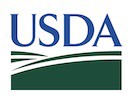Pollinators help ensure the world eats. Scientists estimate that about 75% of the world’s flowering plants and about 35% of the world’s food crops depend on animal pollinators to produce. While more than 3,500 species of native bees help increase crop yields, pollinators include many more species than just bees. Flowers can be pollinated by both insects and animals - such as bees, wasps, moths, flies, butterflies, birds, and even small mammals such as bats.
Despite their importance, many pollinators are declining in numbers, posing a threat not only to the world’s ecosystems but to global food security as well. To help address overall pollinator decline, USDA’s National Institute of Food and Agriculture (NIFA) partners with Land-grant Universities (LGUs), U.S. government laboratories, and private and nonprofit organizations to support research, education, and extension programs advancing pollinator health.
Since 2020, NIFA has awarded $15.98 million via more than 40 competitive grants, including Agriculture and Food Research Initiative grants as well as non-AFRI grants. Additionally, NIFA capacity funding to Land-grant Institutions supported 28 additional research and Extension projects.
Multi-state project reaping rewards
NIFA’s Multi-State Research Fund also provides crucial support to projects that incorporate multiple institutions tackling vital projects. One such grant brought together the University of California, Cornell University, Cornell Cooperative Extension, Delaware Cooperative Extension, University of Illinois, Louisiana State University, University of Massachusetts, Michigan State University, University of Minnesota, Mississippi State University, University of Nebraska, University of New Hampshire, North Carolina Cooperative Extension, Pennsylvania State University, Purdue University, Rutgers University, University of Vermont, and Virginia Tech. Their goal—harness chemical ecology to address agricultural pest and pollinator challenges. To reduce reliance on pesticides, scientists explored ways to harness natural plant defenses, such as emitting chemicals that slow insect feeding, inhibit infections, call beneficial insects to their aid or warn other plants.
Researchers collaborated to better understand these interactions, find ways to enhance natural plant defenses, and improve the economic and environmental sustainability of crop production.
Working on a multi-state team helped researchers address overlapping pest issues in the region, while their diverse expertise allowed the team to tackle a variety of crops and pests. Their work produced important insights into pollinators and how to protect them from disease and pesticides.
- Cornell University determined whether common co-occurring exposures to pesticides result in synergistic toxicity in bees.
- University of California-Davis identified floral chemistry traits and microbial communities that affect the patterns or preferences of hummingbirds, honey bees, and carpenter bees.
- University of Massachusetts discovered that exposure to pollen from sunflowers and a wide range of sunflower relatives helps reduce pathogen infection in bumble bees.
You can read more about this multi-state effort at bit.ly/NE1501.
For more information:  U.S. Department of Agriculture
U.S. Department of Agriculture
+1 202 720 2791
askusda@usda.gov
www.usda.gov
